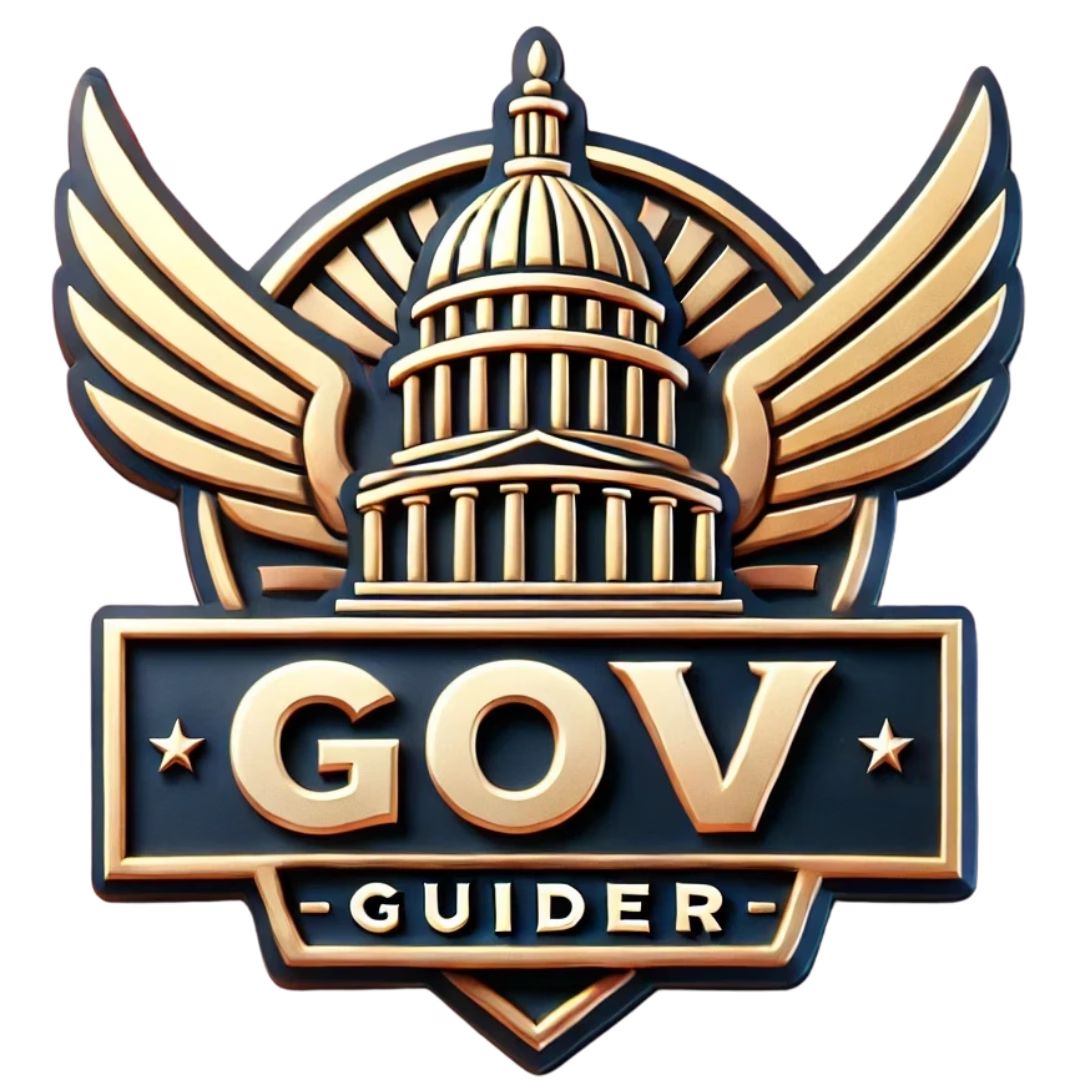Key Takeaways
- Public benefit programs provide essential support to low-income individuals and families, alleviating poverty and improving quality of life.
- Key government assistance programs include SNAP, Medicaid, TANF, and housing support, each aimed at addressing specific needs.
- Eligibility for public assistance varies by program but generally depends on income and resource criteria.
- Understanding EBT systems is crucial for accessing food assistance benefits effectively.
- Public benefits charges help fund vital services, including energy assistance and educational programs for low-income households.
- California offers extensive government aid programs, including CalWORKs and CalFresh, designed to support vulnerable populations.
In today’s complex economic landscape, understanding public benefit programs is essential for individuals and families seeking financial support. These programs, often funded by government initiatives, provide crucial assistance to those in need, helping to alleviate poverty and improve quality of life. In this article, we will explore the various types of government assistance programs, including examples from different states, eligibility requirements, and the specific benefits available to low-income individuals. We will also delve into the significance of these programs, addressing common questions such as “What is a public benefit program?” and “Does EBT count as public assistance?” By the end of this guide, you will have a comprehensive understanding of public assistance, empowering you to navigate the resources available to you and your community effectively.
What is a Public Benefit Program?
Understanding the Importance of Public Benefit Programs
Overview of Public Benefit Programs
Public benefit programs are government-funded initiatives designed to provide essential services, financial assistance, and resources to eligible individuals and families. These programs aim to alleviate poverty and improve the quality of life for those in need by addressing fundamental living requirements. Key components of public benefit programs include:
- Food Assistance: Programs like the Supplemental Nutrition Assistance Program (SNAP) offer financial aid to purchase nutritious food, helping to combat food insecurity. According to the USDA, SNAP serves millions of Americans, providing critical support for low-income households.
- Healthcare Services: Medicaid and the Children’s Health Insurance Program (CHIP) provide health coverage for low-income individuals and families, ensuring access to necessary medical care. The Centers for Medicare & Medicaid Services (CMS) reports that these programs are vital for maintaining public health.
- Housing Support: Public housing programs and rental assistance initiatives, such as Section 8, help low-income families afford safe and stable housing. The U.S. Department of Housing and Urban Development (HUD) emphasizes the importance of affordable housing in promoting community stability.
- Financial Aid: Programs like Temporary Assistance for Needy Families (TANF) offer cash assistance to families in crisis, helping them meet immediate needs while working towards self-sufficiency. The Administration for Children and Families highlights TANF’s role in supporting families during challenging times.
- Employment Services: Workforce development programs assist individuals in gaining skills and finding employment, contributing to economic stability. The U.S. Department of Labor provides resources and training to enhance job readiness.
Public benefit programs are crucial in fostering social equity and ensuring that all individuals have access to basic necessities. For more information on specific programs and eligibility, resources like Gov Guider can provide guidance on navigating these benefits effectively.
Who Funds Public Assistance Programs?
Public assistance programs are funded through a combination of federal, state, and local government resources. The federal government allocates significant funding to various programs, such as SNAP and Medicaid, which are essential for supporting low-income individuals and families. State governments also contribute by administering these programs and providing additional funding tailored to local needs. For example, Benefits.gov outlines how federal and state partnerships work to deliver these vital services.
Moreover, funding for public assistance programs can come from taxes collected at various levels of government. This collaborative funding structure ensures that essential services are available to those who need them most, promoting social welfare and economic stability across communities. Understanding the funding sources for these programs can help individuals better navigate their options and access the support they require.

Understanding the Importance of Public Benefit Programs
Public benefit programs are essential for providing support to individuals and families facing financial hardships. These programs not only alleviate poverty but also ensure that basic living needs are met. By understanding the significance of public assistance, we can appreciate how these programs contribute to the well-being of society as a whole.
Overview of Public Benefit Programs
Public benefits refer to various government assistance programs designed to support individuals and families with low or no income. These benefits aim to alleviate poverty and provide essential resources for basic living needs. Here are some key examples of public benefits:
- Supplemental Nutrition Assistance Program (SNAP): Commonly known as food stamps, SNAP provides financial assistance for purchasing food, helping to ensure that low-income individuals and families have access to nutritious meals. According to the USDA, SNAP lifted approximately 3.1 million people out of poverty in 2019.
- Temporary Assistance for Needy Families (TANF): TANF offers temporary financial assistance and support services to families with children in need. This program also focuses on promoting job preparation and work opportunities, helping families achieve self-sufficiency.
- Public Housing: This program provides affordable rental housing to low-income families, the elderly, and individuals with disabilities. Public housing aims to ensure that everyone has access to safe and decent living conditions.
- Section 8 Housing Choice Voucher Program: This program allows low-income families to rent privately owned housing with the help of rental assistance. Participants can choose their housing, which promotes greater flexibility and independence.
- Medicaid: Medicaid is a state and federal program that provides health coverage to eligible low-income individuals and families. It covers a wide range of health services, including hospital visits, preventive care, and long-term care.
These public benefits play a crucial role in supporting vulnerable populations and addressing economic disparities. For more detailed information on eligibility and application processes, resources such as the U.S. Department of Health and Human Services and local government websites can provide authoritative guidance.
Who Funds Public Assistance Programs?
Public assistance programs are funded through a combination of federal, state, and local government resources. The federal government allocates funds to states, which then administer these programs according to their specific needs and regulations. This funding structure allows for flexibility in addressing local issues while ensuring that essential services are available to those in need.
In addition to government funding, various non-profit organizations and community groups may also contribute resources to support public assistance initiatives. Understanding the funding sources for these programs is vital, as it highlights the collaborative effort required to sustain them and the importance of public support in advocating for continued funding.
For more insights into government assistance programs, you can explore government assistance programs for low-income families and comprehensive guides to government assistance.
Types of Government Assistance Programs
Public assistance programs are government initiatives designed to provide financial aid and support to individuals and families in need. These programs aim to alleviate poverty, improve living conditions, and promote self-sufficiency. Some of the major federal, state, and local public assistance programs include:
- Supplemental Security Income (SSI): A federal program that offers financial assistance to elderly, blind, or disabled individuals who have limited income and resources.
- Supplemental Nutrition Assistance Program (SNAP): Formerly known as food stamps, SNAP provides nutritional assistance to eligible low-income individuals and families, helping them purchase food.
- Special Supplemental Nutrition Program for Women, Infants, and Children (WIC): This program offers nutrition education, healthy food, and support to low-income pregnant women, new mothers, and young children to promote healthy growth and development.
- Temporary Assistance for Needy Families (TANF): A federal program that provides temporary financial assistance to families with children in need, along with job training and support services. TANF also includes provisions for child support enforcement to assist families in becoming self-sufficient.
- Medicaid: A state and federal program that provides health coverage to eligible low-income individuals and families, ensuring access to necessary medical services.
- Housing Assistance Programs: These include various federal and state initiatives aimed at providing affordable housing options and rental assistance to low-income families.
For more detailed information on public assistance programs, including eligibility requirements and application processes, you can visit official government resources such as Benefits.gov, which serves as a comprehensive guide to federal and state assistance programs.
Overview of Government Cash Assistance Programs
Government cash assistance programs are designed to provide direct financial support to individuals and families facing economic hardships. These programs are crucial for those who may be struggling to meet basic needs such as food, housing, and healthcare. Some key examples of government cash assistance programs include:
- Temporary Assistance for Needy Families (TANF): Offers cash benefits to low-income families with children, helping them cover essential expenses.
- General Assistance (GA): Available in some states, GA provides cash aid to individuals who do not qualify for other assistance programs.
- Supplemental Security Income (SSI): Provides monthly cash payments to eligible elderly, blind, or disabled individuals.
These programs are essential for promoting financial stability and self-sufficiency among low-income populations. For more information on cash assistance programs, you can explore resources like this comprehensive guide to government assistance.
What are Public Assistance Benefits?
Public assistance benefits encompass a range of services and financial aid provided by government programs to support individuals and families in need. These benefits can include:
- Cash Assistance: Direct financial support to help cover living expenses.
- Food Assistance: Programs like SNAP that help families purchase food.
- Healthcare Coverage: Access to medical services through programs like Medicaid.
- Housing Assistance: Support for rent or mortgage payments to prevent homelessness.
Understanding what public assistance benefits are available can empower individuals to seek the help they need. For further insights into public assistance programs, consider visiting this resource on government assistance programs for low-income families.
Understanding EBT and Public Assistance
Electronic Benefits Transfer (EBT) is a system that allows individuals to access their public assistance benefits electronically. This method is primarily used for programs like the Supplemental Nutrition Assistance Program (SNAP), which provides food assistance to eligible low-income individuals and families. EBT cards function similarly to debit cards, enabling users to purchase approved food items at authorized retailers. Understanding how EBT works is crucial for those seeking to utilize public assistance effectively.
What Qualifies as Public Assistance?
Public assistance encompasses a range of government programs designed to support individuals and families facing financial hardships. These programs include:
- Food Assistance: Programs like SNAP provide essential food benefits to low-income households.
- Cash Assistance: Government cash assistance programs, such as Temporary Assistance for Needy Families (TANF), offer financial support to families in need.
- Housing Assistance: Public housing and housing choice vouchers help individuals secure affordable living conditions.
- Utility Assistance: Programs like LIHEAP assist with energy bills, ensuring families can maintain essential services.
To qualify for these public assistance programs, individuals typically need to meet specific income and resource criteria. Each program may have different eligibility requirements, so it’s essential to review the guidelines for the specific assistance you are seeking. For more information on eligibility and available programs, you can explore resources such as Benefits.gov or consult local government websites.
Welfare Benefits for Single Persons and EBT
Welfare benefits are crucial for single individuals facing economic challenges. These benefits can include cash assistance, food stamps, and housing support. For instance, in New York, single individuals may qualify for cash assistance through the government assistance programs available in the state. Additionally, EBT is a vital resource for accessing food assistance, ensuring that single individuals can afford nutritious meals.
Understanding the various welfare programs available can empower individuals to seek the support they need. It’s important to stay informed about the specific benefits and resources available in your state, such as government assistance programs in New York or food assistance programs that can help alleviate financial burdens.

Understanding Public Benefits Charges
Public benefits charges are fees imposed on utility bills to fund various government assistance programs aimed at helping low-income individuals and families. These charges are often included in electric bills and are designed to support initiatives that provide energy assistance, weatherization services, and other public benefits. Understanding how these charges work can help consumers navigate their utility costs and access available resources.
California Government Assistance Programs and Charges
In California, public benefits charges are a critical component of the state’s efforts to support low-income residents. These charges help fund programs such as the California Alternate Rates for Energy (CARE) program, which provides discounted rates on energy bills for eligible households. Additionally, the funds support the Energy Savings Assistance Program, which offers free weatherization services and energy-efficient appliances to qualifying families.
Residents can learn more about these programs and determine their eligibility through resources like Benefits.gov or the Administration for Children and Families. Understanding these charges can empower consumers to take advantage of the assistance available to them.
Government Aid California: What You Need to Know
Government aid in California encompasses a variety of programs designed to assist low-income individuals and families. These programs include cash assistance, food assistance, and housing support. For example, the CalWORKs program provides cash assistance to families in need, while the Supplemental Nutrition Assistance Program (SNAP) offers food benefits to eligible households.
It’s essential to stay informed about the various government assistance programs for low-income families in California, as they can significantly alleviate financial burdens. By understanding what public assistance programs are available, residents can better navigate their options and access the support they need.
Understanding Public Benefits Charges
The public benefits charge (PBC) on your electric bill is a fee that utilities collect to fund various programs aimed at promoting energy efficiency, renewable energy, and assistance for low-income consumers. This charge is essential in a competitive energy market, as it helps maintain critical services that might otherwise be jeopardized.
California Government Assistance Programs and Charges
In California, the public benefits charge plays a significant role in supporting various government assistance programs. These programs are designed to help low-income households manage their energy costs and promote sustainable energy practices. Key components of the public benefits charge include:
- Energy Efficiency Programs: These initiatives provide funding for residential and commercial energy-saving measures, such as weatherization, appliance rebates, and energy audits. According to the U.S. Department of Energy, energy efficiency can reduce energy consumption by up to 30%, significantly lowering utility bills for consumers.
- Low-Income Assistance: The PBC supports programs that offer financial assistance to low-income households, helping them manage their energy costs. This includes initiatives like the Low-Income Home Energy Assistance Program (LIHEAP), which provides direct financial aid to eligible families.
- Renewable Energy Development: Funds from the PBC are often allocated to support the development of renewable energy sources, such as solar and wind power. This aligns with national goals to increase the share of renewables in the energy mix, as highlighted by the U.S. Energy Information Administration.
- Consumer Education: The charge also finances educational programs that inform consumers about energy conservation practices and available assistance programs, empowering them to make informed decisions about their energy use.
In summary, the public benefits charge is a crucial element of your electric bill, designed to ensure that essential energy services and programs remain available, particularly for vulnerable populations. For more detailed information about how these programs operate in your state, you can visit resources like the Administration for Children and Families or your local utility’s website.
Government Aid California: What You Need to Know
California’s government assistance programs are extensive and cater to a wide range of needs. These programs include cash assistance, food assistance, and housing support, all aimed at alleviating poverty and providing essential services to low-income individuals and families. Understanding what public assistance programs are available can help you navigate the resources at your disposal.
Some notable California government assistance programs include:
- CalWORKs: This program provides cash assistance and services to eligible families with children, helping them achieve self-sufficiency.
- CalFresh: Known as the Supplemental Nutrition Assistance Program (SNAP), CalFresh offers food benefits to low-income individuals and families, ensuring access to nutritious food.
- California Section 8 Housing Vouchers: This program assists low-income families in affording safe and decent housing by providing rental assistance.
For more information on California’s public assistance programs, you can explore the government assistance programs for low-income families or visit the official government benefits site.
Understanding Public Benefits Charges
Public benefits charges are fees that utility companies may impose on customers to fund various social programs aimed at assisting low-income households. These charges are often included in electric bills and are designed to support initiatives such as energy efficiency programs, weatherization assistance, and other public assistance programs. Understanding these charges is crucial for consumers, especially those who may be eligible for government assistance programs.
California Government Assistance Programs and Charges
In California, public benefits charges are utilized to fund several government assistance programs aimed at helping low-income residents. These programs include the California Alternate Rates for Energy (CARE) program, which provides discounts on energy bills for eligible households. Additionally, the California Energy Commission administers programs that offer financial aid for energy-efficient home improvements. The funds collected through public benefits charges are essential for maintaining these programs, ensuring that vulnerable populations receive the support they need.
Government Aid California: What You Need to Know
When navigating government aid in California, it’s important to understand the various public assistance programs available. These programs include cash assistance, food assistance, and housing support. For instance, the CalWORKs program provides cash assistance to families in need, while the Supplemental Nutrition Assistance Program (SNAP) offers food benefits. Residents can access these services through local county offices or online resources. For more detailed information on available programs, visit the official government benefits site at Benefits.gov. Understanding these options can empower individuals and families to take advantage of the support systems in place.




